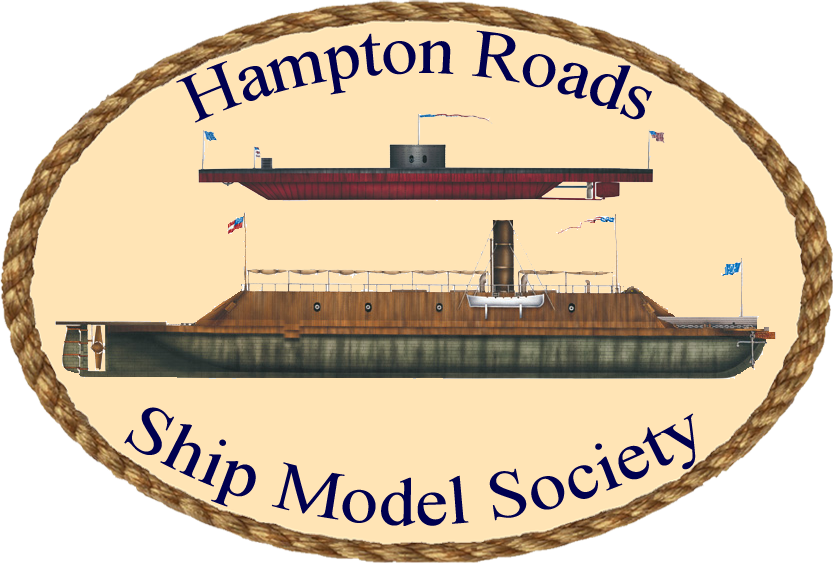Typical Schedule
This table represents the typical schedule at the Mariners’ Museum Modelmaker’s workshop. Please see our calendar for updates. If necessary, you can call 757.591.7356 during the hours listed below to confirm someone is in the workshop.
| Day | Model Maker | Hours |
|---|---|---|
| Sunday (1st, 3rd & 5th) | Ron Lewis | 11:00 – 2:30 |
| Sunday (2nd & 4th) | Warren Garcia Tim Wood | 9:00 – 4:00 |
| Monday | John Cheevers | 11:30 – 4:30 |
| Tuesday | John Cheevers Tim Wood | 10:00 – 2:00 |
| Wednesday | Ron Lewis | 11:00 – 2:30 |
| Thursday | John Cork | 10:00 – 2:00 |
| Friday | Stewart Winn | 9:00 – 4:00 |
| Saturday | Dave Baker | 9:00 – 5:00 |
Regular Volunteers
Ron Lewis
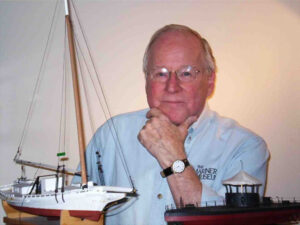
Ron builds highly modified kits, meaning that much the material is replaced with superior stock and the model is not always built exactly to the plans. Deviations are made based on extensive research. Ron also does a lot of restoration and conservation work.
Though his primary area of expertise is Chesapeak Bay workboats, his two current projects are small-scale models of the clipper ships Cutty Sark and Flying Cloud.
A few examples of his work can be found on our website.
Ron has been a volunteer at the Mariners’ Museum for 31 years in various roles, and is currently found at the modelmaker’s stand on Wednesdays and on the 1st, 3rd, and 5th Sundays, between 11 am and 2:30 pm.
John Cheevers
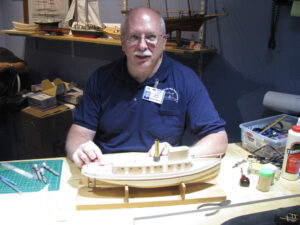
John is a superb craftsman and one of our longest serving members, having joined in 1980. He recently retired after a long career at Newport News Shipbuilding and will able to spend even more time building models, both at home and at the museum.
John scratch-builds models of powered vessels using the lift, or “bread-and-butter” method. He is currently working on the lighthouse tender Beech.
Please browse our website it see his completed models.
John is typically in the shop on Fridays and the 2nd and 4th Sundays of each month. His normal hours are from 9 am to 4 pm.
Tim Wood
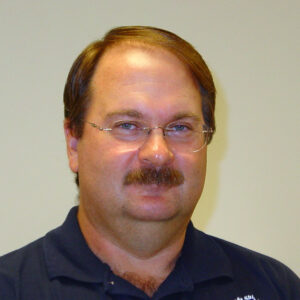
Tim started building plastic ship models at a time when you could buy a kit at the local “Five and Dime” for a dollar. Tim’s favorite modeling subjects are Great Lakes freighters, WWII-era warships of the United States Navy, and half hull models of sailing ships from the early 1900’s. He is currently working on a Bluejacket kit of the Fletcher-class destroyer USS Kidd DD661, and a scratch-built model of the whaleback freighter Charles W. Wetmore (late 1900’s), which was the first whaleback to operate outside the Great Lakes.
Five of Tim’s models can be found on our website.
Tim has been working in the model shop since 2018 and is in the model shop the 2nd and 4th Sunday of each month. His normal hours are from 9 am to 4 pm.
Stewart Winn
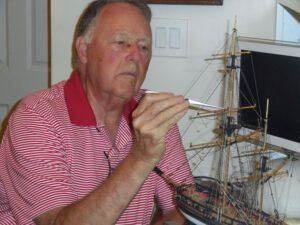
Stewart has built models of different kinds off and on since childhood, but became serious about ship modeling in 2010 after retiring from an engineering career. Early in his career he served three years in the Navy, which whetted his appetite for nautical history. His primary area of interest is 17th and 18th century vessels, many fine examples of which can be found on our website. His models are either scratch built or from kits, built in the plank-on-frame or plank-on-bulkhead method.
His current project is a Greek bireme.
Stewart is typically in the shop on Mondays from 11:30 am to 4:30 pm.
John Cork
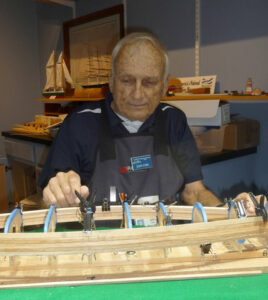
John models canoes and kayaks. His current project is a series of models showing various stages of construction so that guests are better able to interpret the building process. He does an excellent job of engaging younger visitors, making the model shop a very interactive experience for them.
We do not yet have examples of John’s work on our website, but hope to soon.
John has been working in the model shop since 2014. He is usually there on Tuesdays and Thursday from 10 am to 2 pm.
Dave Baker
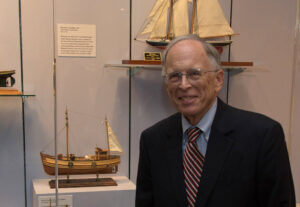
Though not a member of the Hampton Roads Ship Model Society, we are happy to provide information on Dave’s contributions to the Mariners’ Museum model shop.
Dave started out scratch-building 1:1200 and 1:600 scale waterline models. He later turned to 1:250 scale card models and later still to wooden ship models, though today all of his project are of the card variety, either 1:250 or 1:100. Many of the card models are monitors – not the USS Monitor, but similar vessels from many nations. Lighthouses and a few less nautical subjects are thrown in for good measure.
Dave excels at interacting with the younger visitors, for whom card modeling would be an excellent introduction to the hobby.
Dave has also spent time identifying ships in photographs for the Mariners’ Museum library, assisting companies in the design of detailed plastic and cast metal model kits, publishing books and articles about warships, and contributing line drawings for other authors’ books on the same subject.
Two of Dave’s wooden ship models are on our website, and examples of his card models will soon follow.
Dave volunteers his time at the modelmaker’s stand on Saturdays from 9 am to 5 pm.
Alternates
Greg Harrington
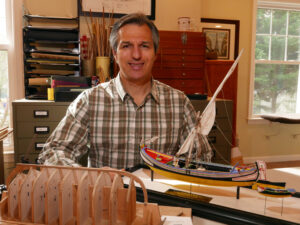
Greg’s favorite subjects are American and European sail-powered workboats from the late 1800s or early 1900s, though his ship model bucket list includes steam tugs, train ferries and warships from the same period.
Most of his models are scratch-built. His current project is a Danish sailboat that dragged a net for eels (if you are cringing, yes, most people have that reaction).
He only has two other completed projects, both of which have extensive build logs on our website.
